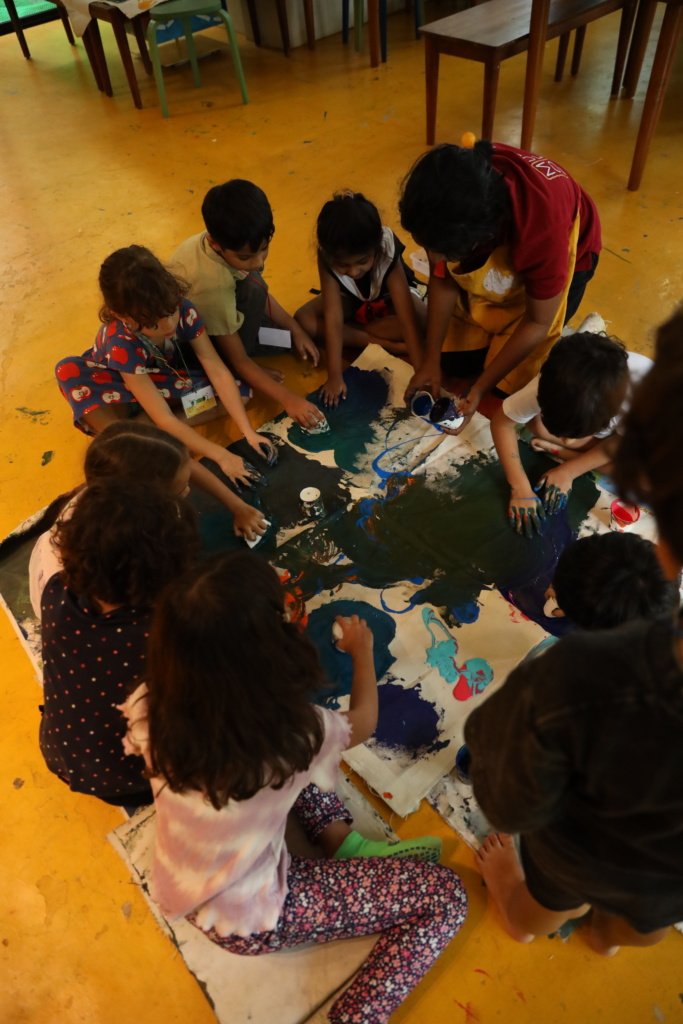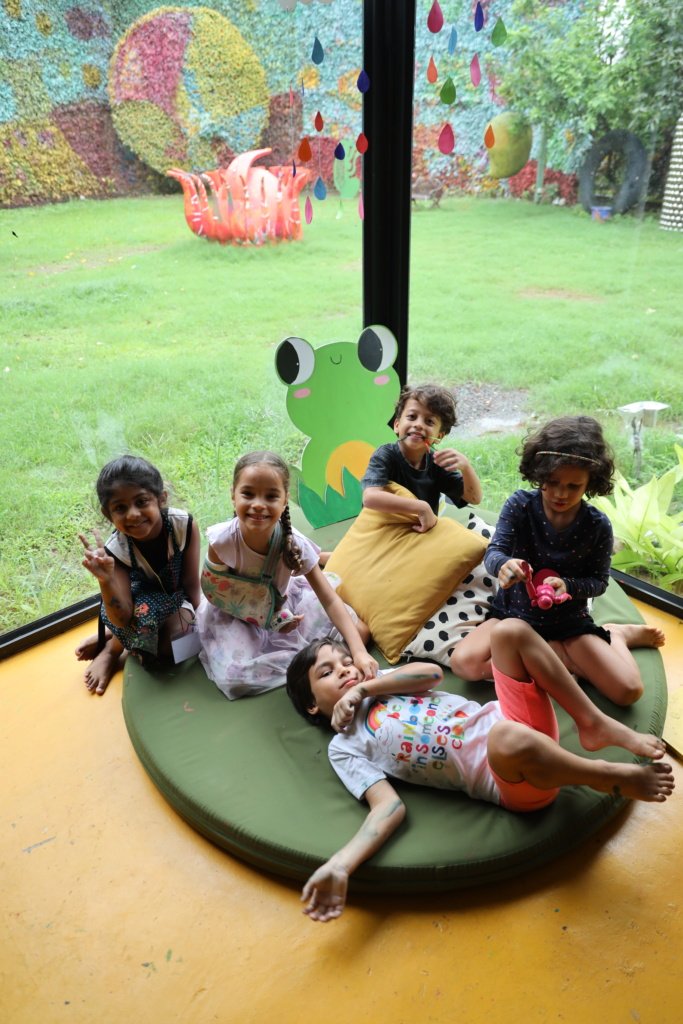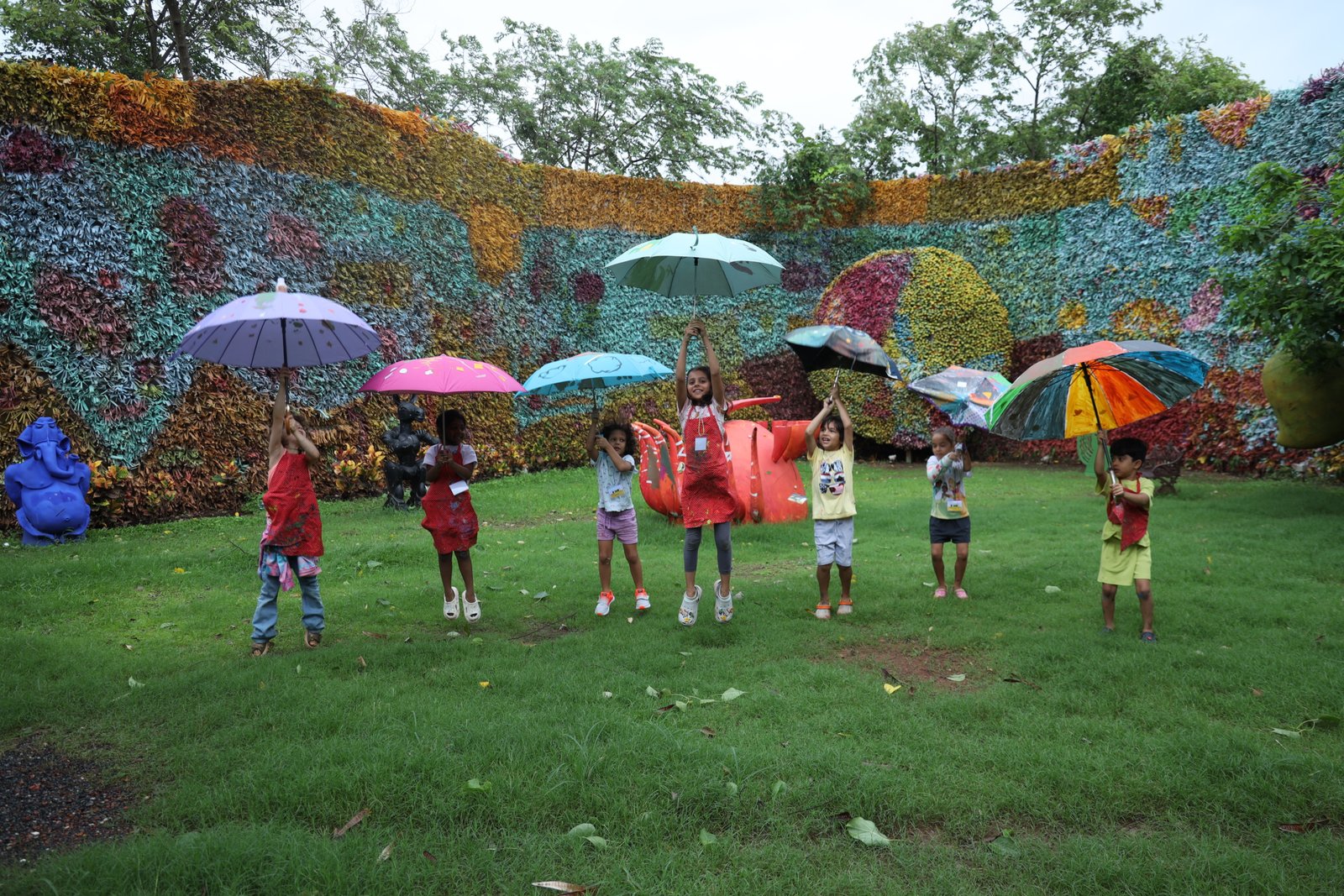Bloop! Monsoon Camp was a week-long educational programme by the Children’s Art Studio for children aged 6 to 12. The pedagogy is centred on nurturing environmental awareness, creative thinking, and close observation. Each day offered a balance of guided facilitation and open-ended exploration, encouraging independent thinking, collaboration, and learning through play.
The monsoon, often seen as dreary, was reframed as a season of natural change. Art became both a tool and a language for discovery. Children engaged with natural and repurposed materials, deepening their understanding of ecosystems through experiential learning. Sustainability was not a separate theme but part of daily practice; children reused, reimagined, and responded to their surroundings with care and curiosity.
Introducing Bloop the Frog
Bloop, the camp mascot, was named after the distinctive sound a raindrop makes upon hitting a puddle. Drawing inspiration from the frogs that inhabit the grounds of the Children’s Art Studio, Bloop served as a symbolic figure embodying curiosity, playfulness, and a deep connection to the monsoon environment.
He was not portrayed in isolation; rather, Bloop was part of a broader ecosystem of monsoon creatures, including beetles, butterflies, caterpillars, centipedes, and others. These characters were integrated into the camp’s activities. Through narrative-driven engagements, participants explored Bloop’s world and developed a deeper awareness of the small but significant life forms that thrive during this time.

The Activities
Activities at Bloop! Monsoon Camp was designed to help children engage with nature through exploration. Creating wind chimes from seashells or building terrariums with moss and soil encouraged close observation and sensory learning. Each activity aimed to deepen ecological understanding by drawing attention to small, often overlooked elements of the environment and cultivating an attentive way of seeing.
Glowbrella
‘Glowbrella’ was all about painting umbrellas and getting ready for the rain in the most fun way possible. The children used bright acrylic paints to cover their umbrellas with rainbows, caterpillars, and clouds. They also added radium stickers, small glowing shapes that made their umbrellas shine in the dark. As they painted and added glowing stickers, they also learned that the stickers were not just for fun. They could help keep them safe by making their umbrellas more visible to drivers during dark and rainy weather. The workshop gave them a chance to be creative while also learning something meaningful. By the end, the children were outside in the drizzle, laughing, spinning their umbrellas, and proudly showing off what they had made.
I painted my umbrella with clouds. So when it rains, I feel like the water drops are falling from the clouds I painted.
– A six year old participant
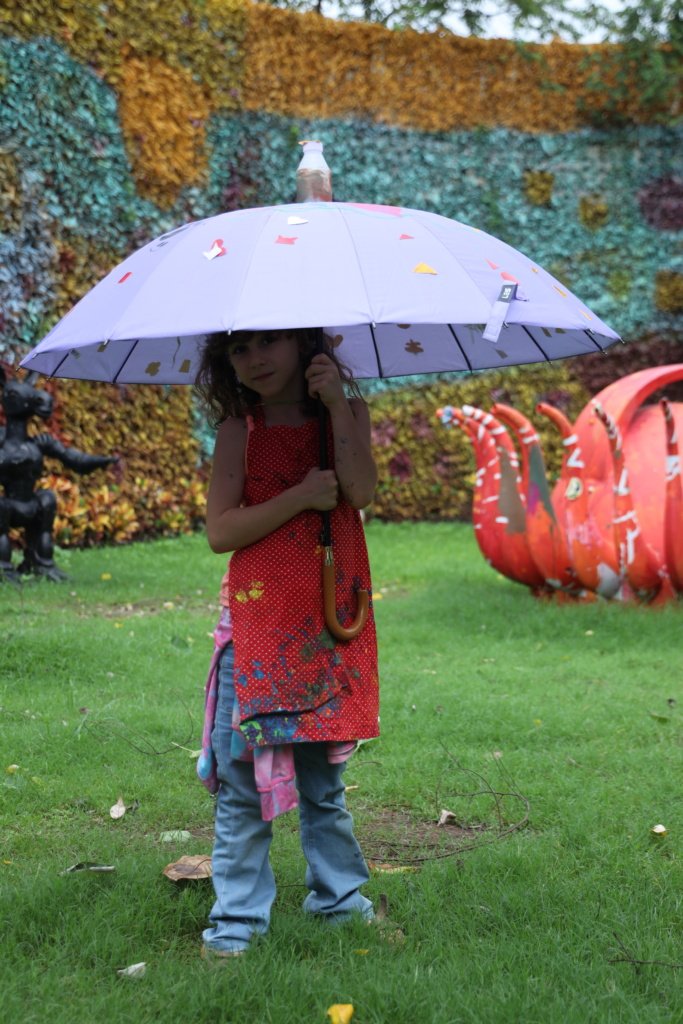
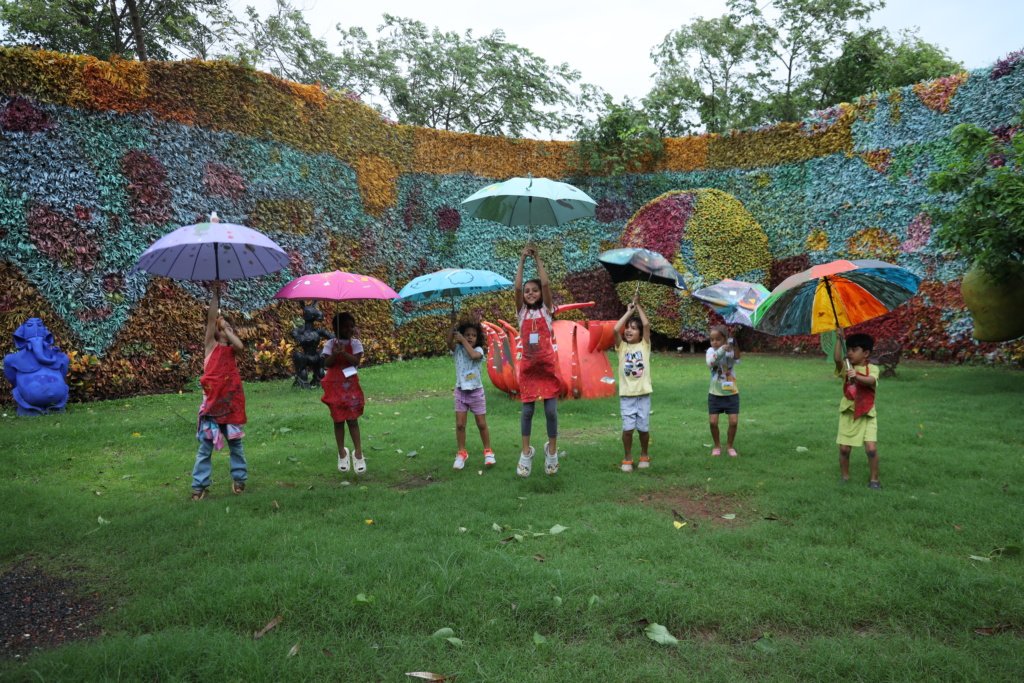
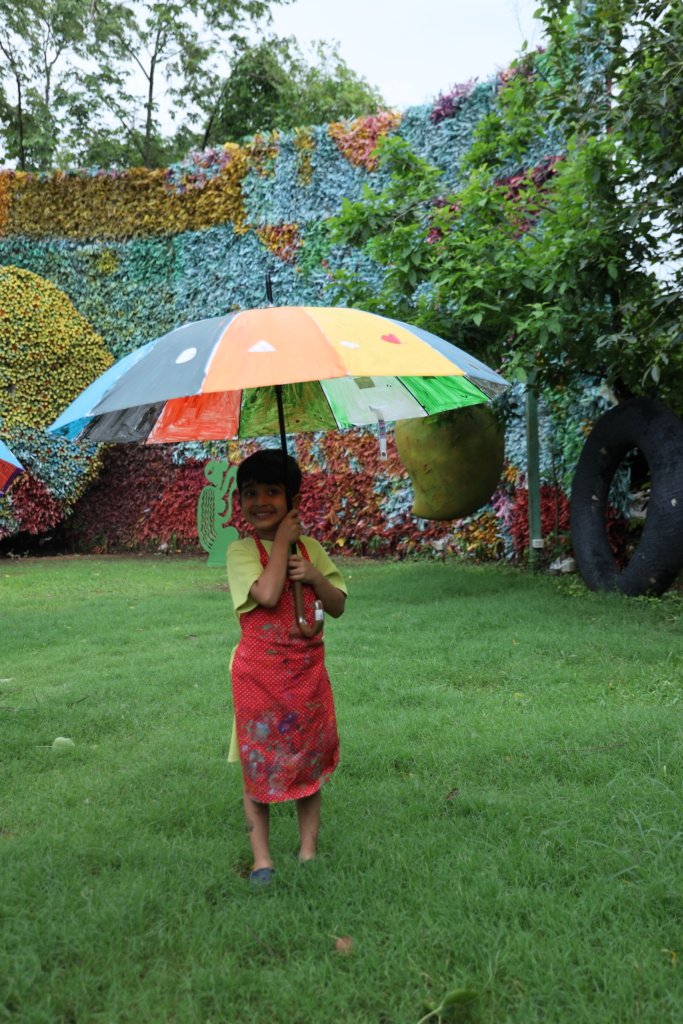
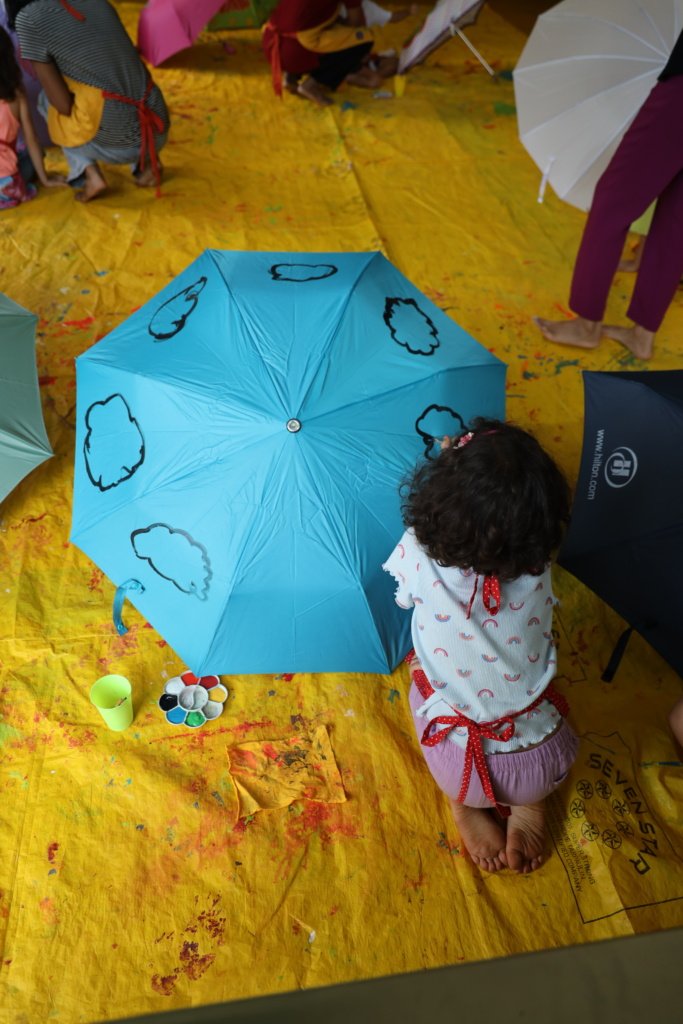
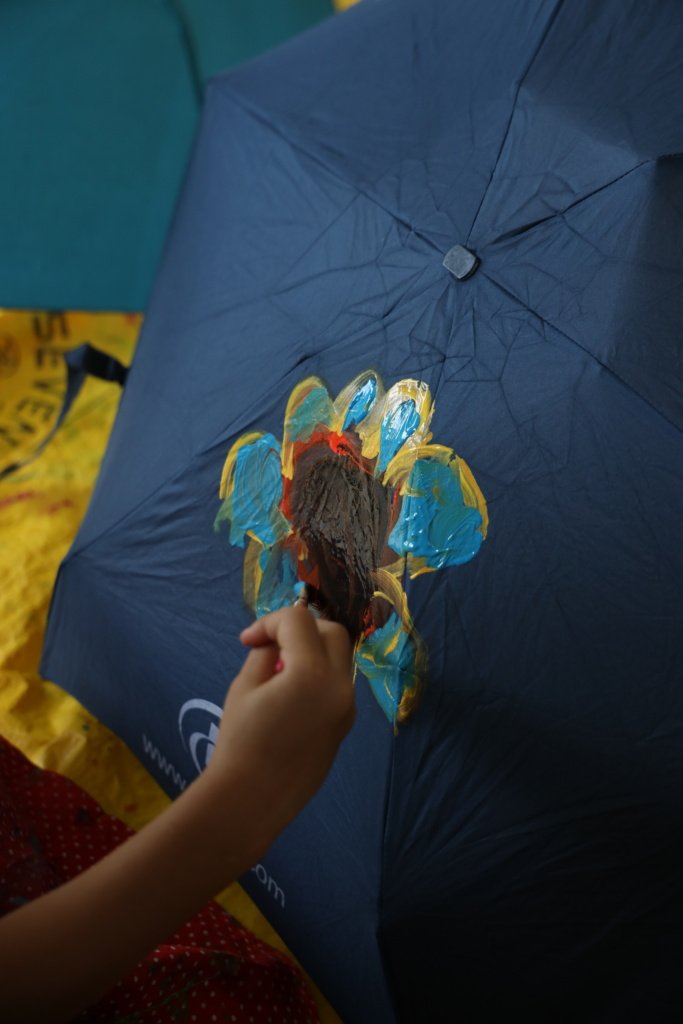
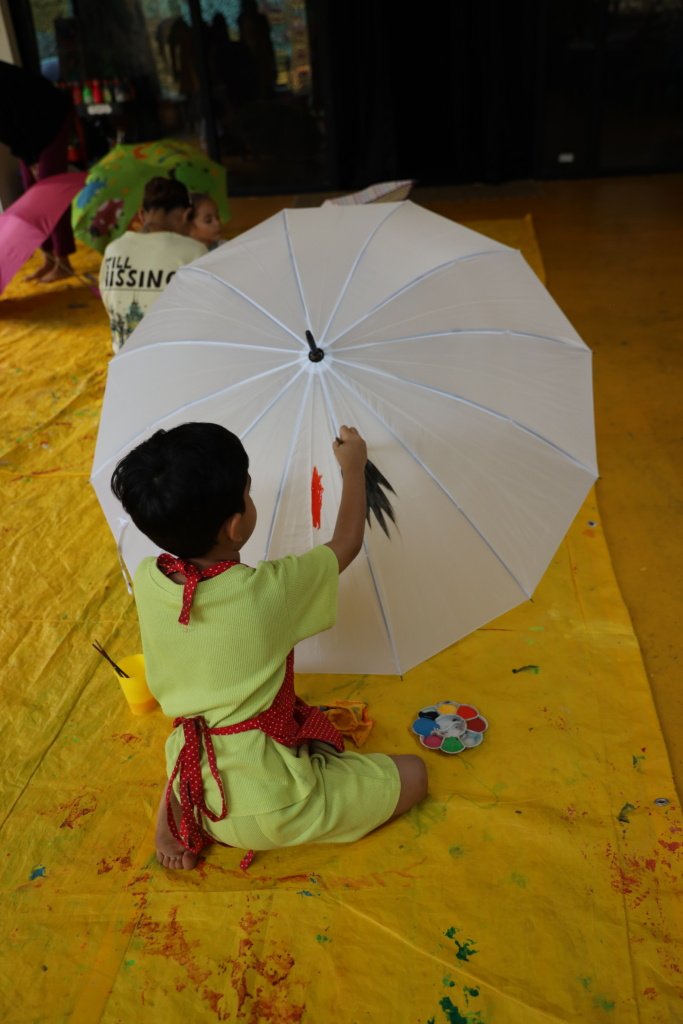
Painted in a Swirl
Painted in a Swirl was a session inspired by marble painting, where children explored abstraction through the movement of colour. Using cups of mixed paint, they poured and tilted their canvases to observe how colours flowed, blended, and interacted. Without predefined shapes or outlines, the focus was on process over product, encouraging experimentation and visual thinking. The resulting patterns evoked natural elements like waves, wind, or rain, allowing children to express ideas and emotions through colour, form, and motion.

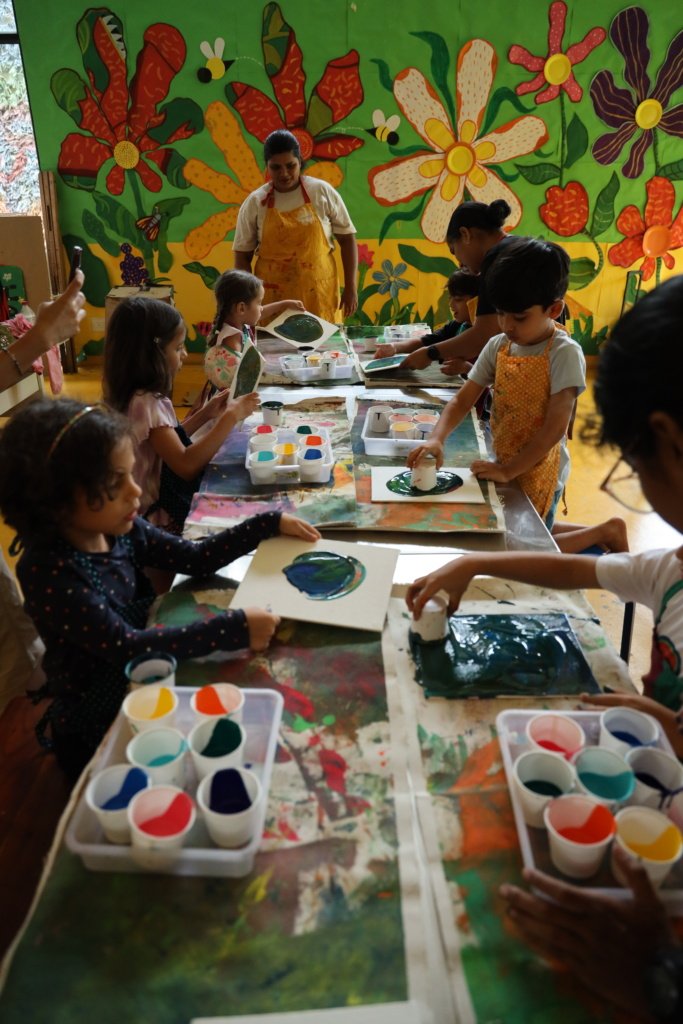
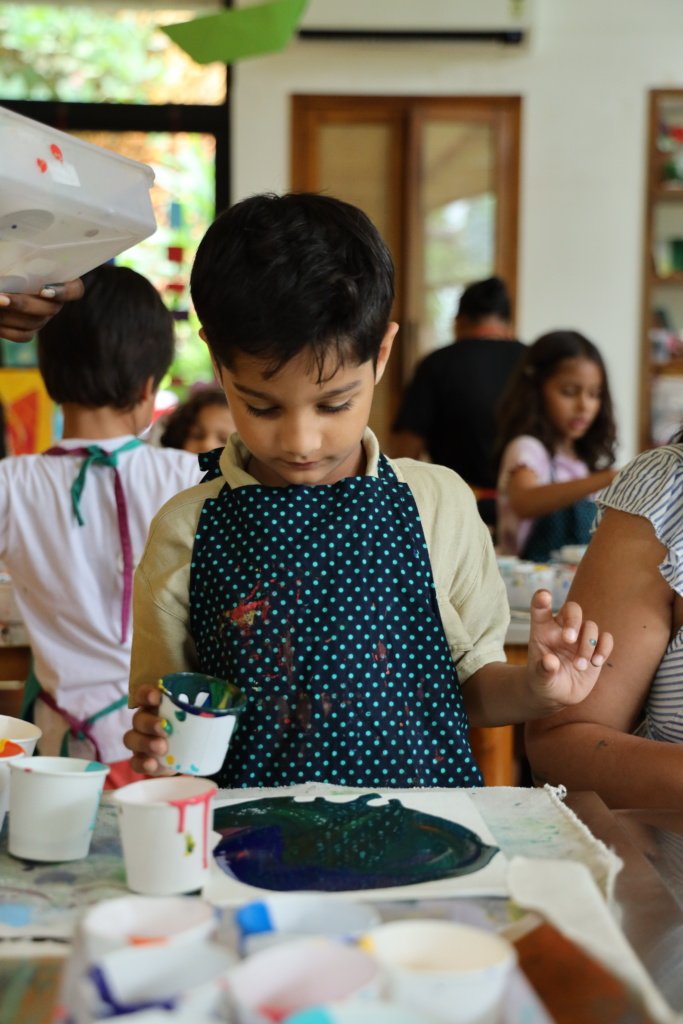
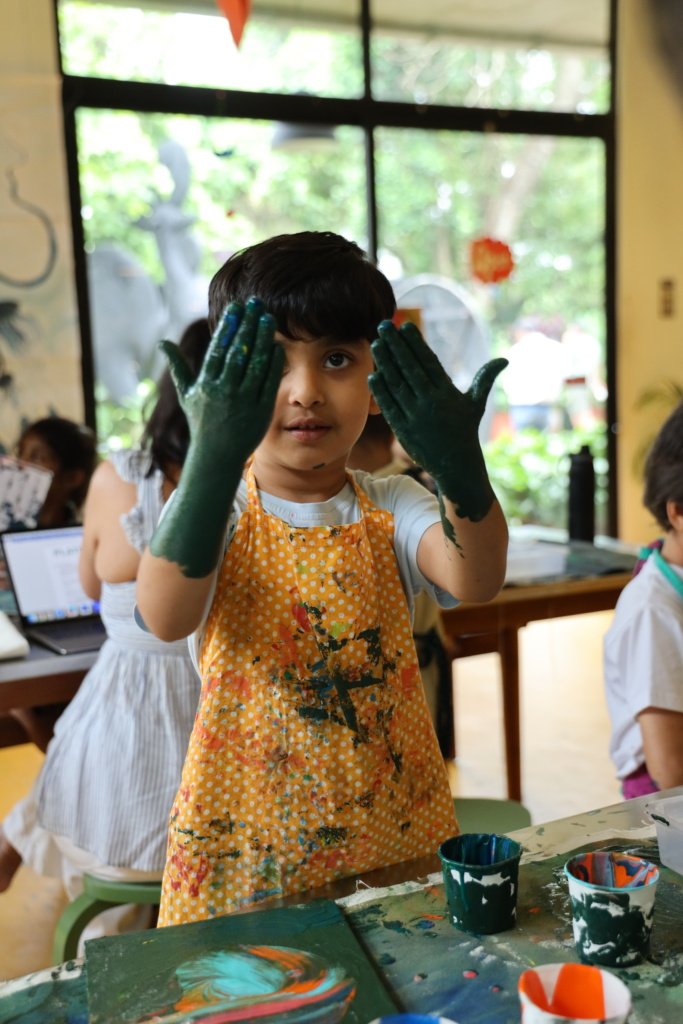
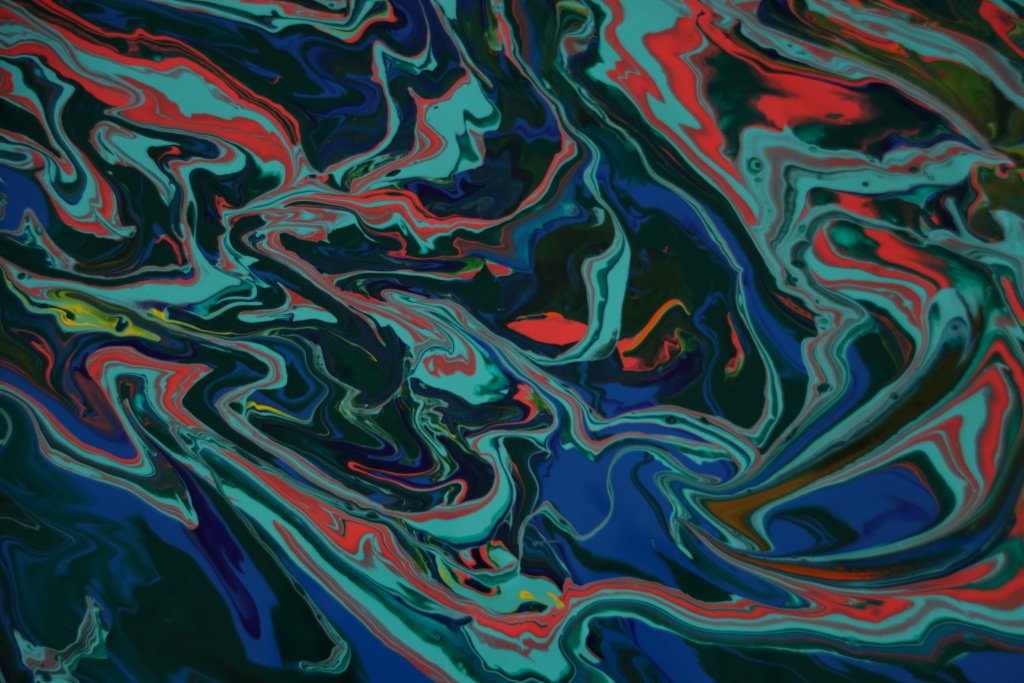
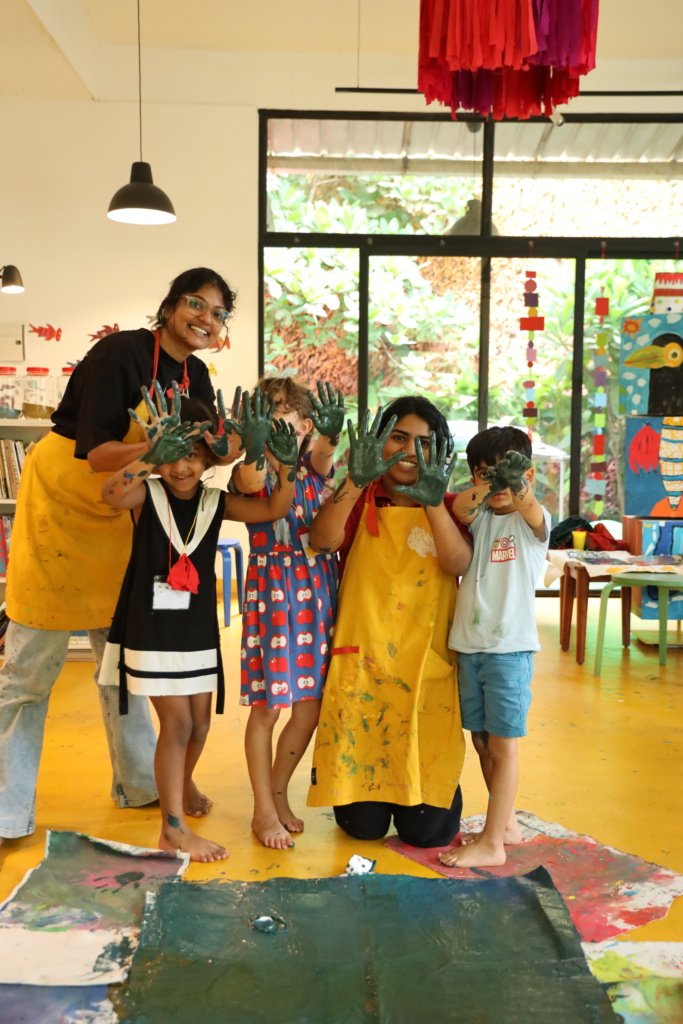
Whispers of the Wind
Whispers of the Wind was a workshop where children explored sound as a sensory and creative experience. Through listening, touching, and making, they investigated how materials behave and interact. Using seashells, beads, thread, and driftwood, they examined texture, weight, and the unique sounds each object produced, like the click of shells, the tap of wood, and the chime of glass. As they assembled their wind chimes, children developed their motor skills, sensory awareness, and a deeper attention to the sounds of the natural world.

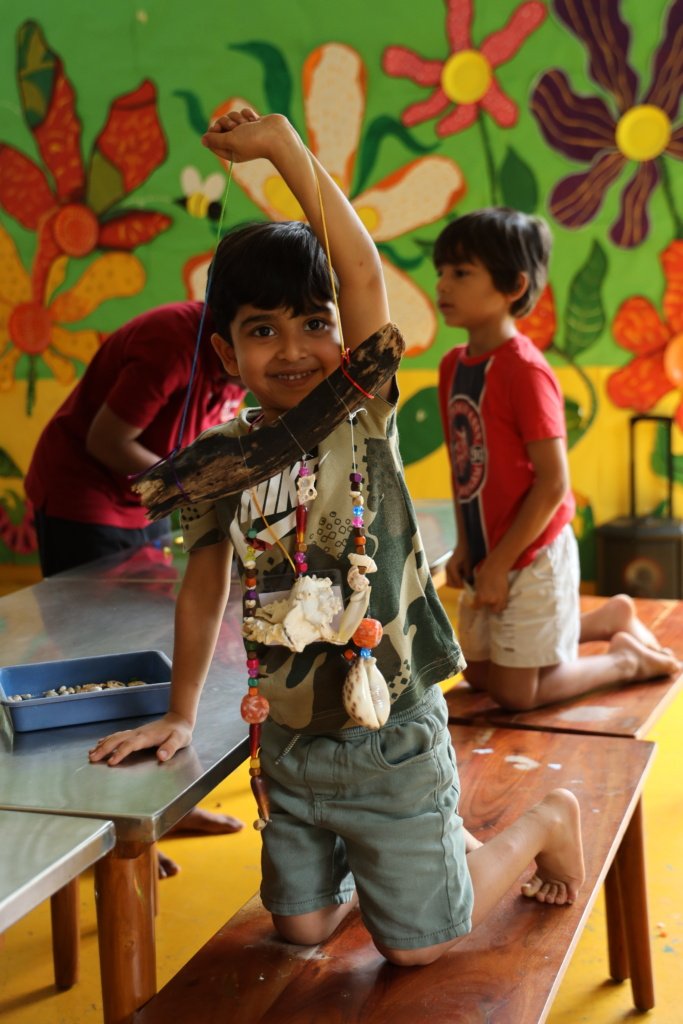
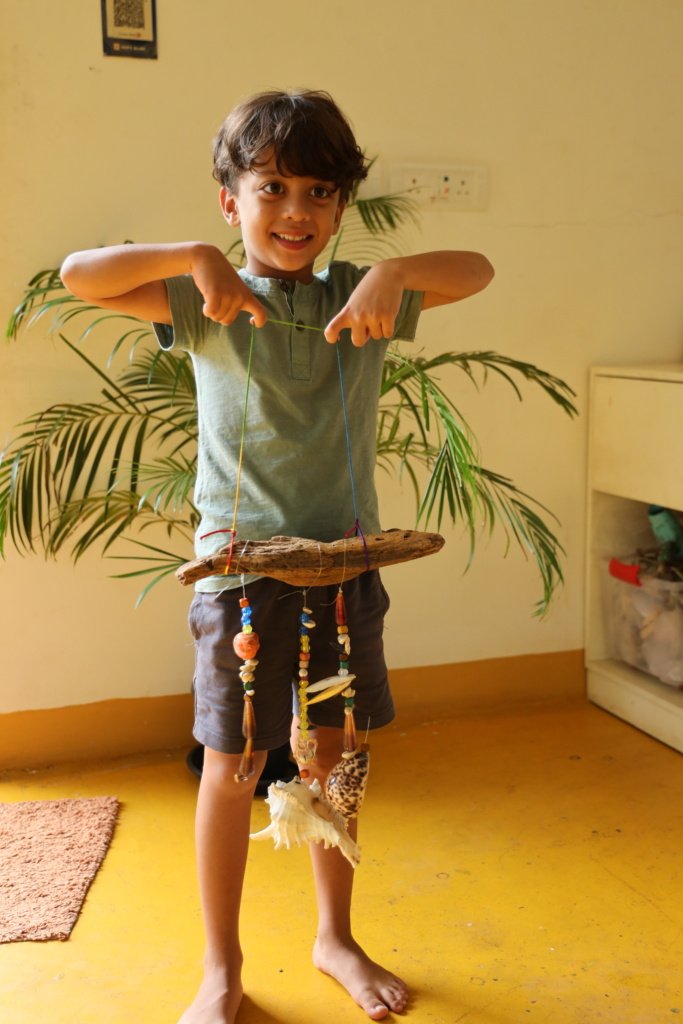
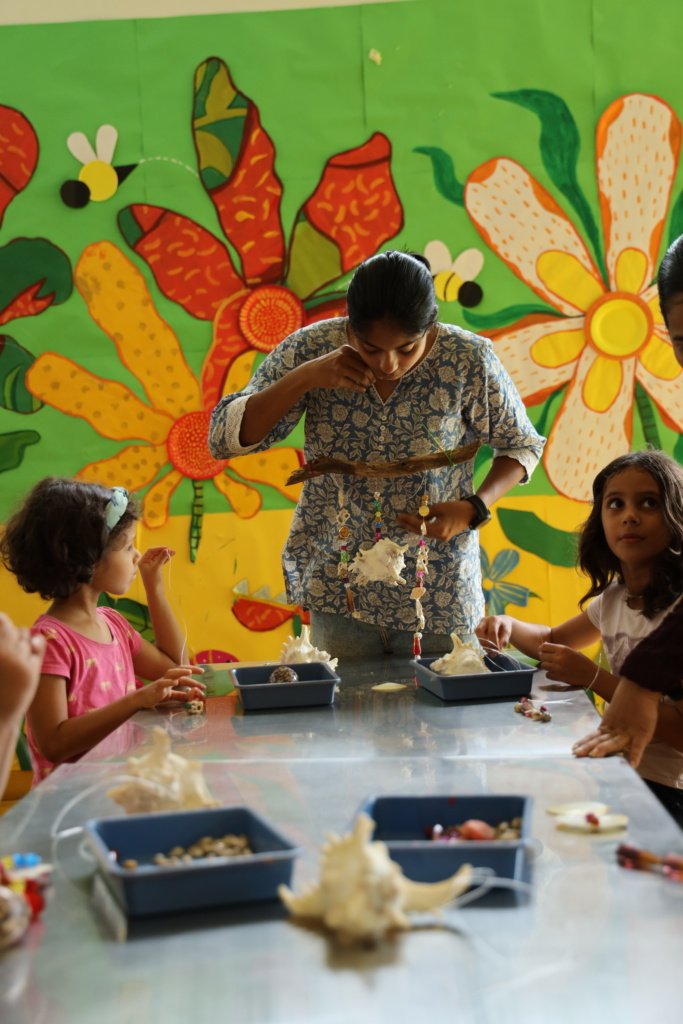
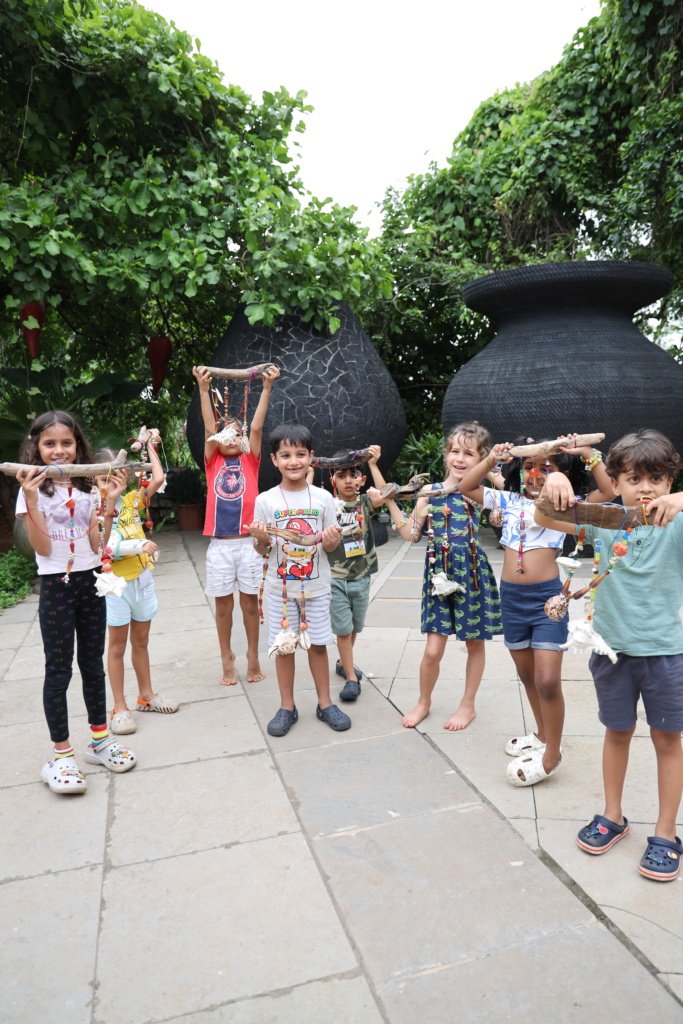
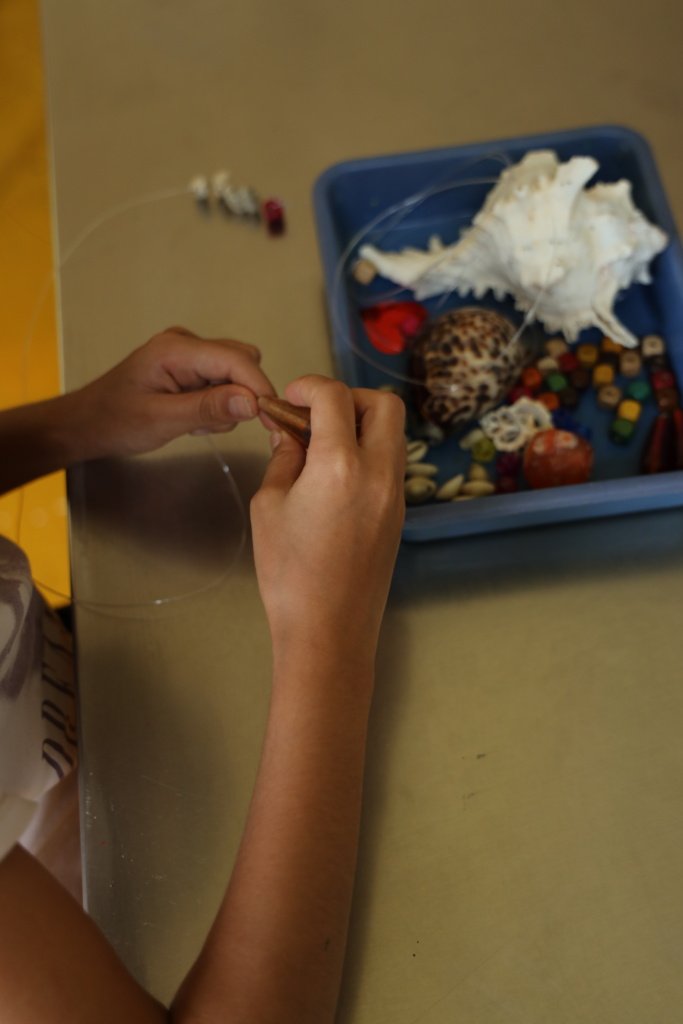
Glow in the Drizzle
In the session of Glow in the Drizzle, children understood how light travels through different materials. The workshop focused on transparency, contrast, and visual composition. Using translucent plastic cans, gateway sheets, and craft paper, children designed and assembled simple lamps. They cut and arranged shapes like fireflies, hills, windows, trees, and observed how these choices affected the way light passed through or was blocked. Once the electric candles were placed inside, the lamps revealed varying effects: some shapes cast sharp shadows, while others produced a soft, diffused glow.
Through this activity, children gained a basic understanding of how light behaves across different surfaces and thicknesses. It also encouraged thoughtful design, as they considered how material and placement influenced what was seen and how it was seen.
I created my lamp with firefly cutouts. So when the lamp is on, I will have fireflies in my room.
– A 9-year-old participant

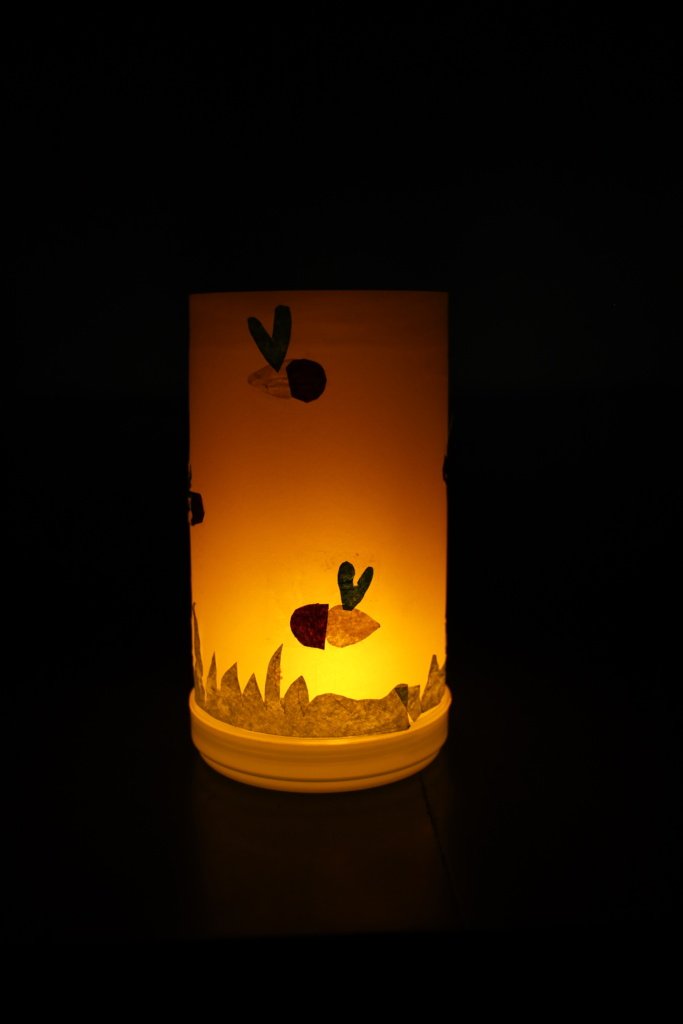
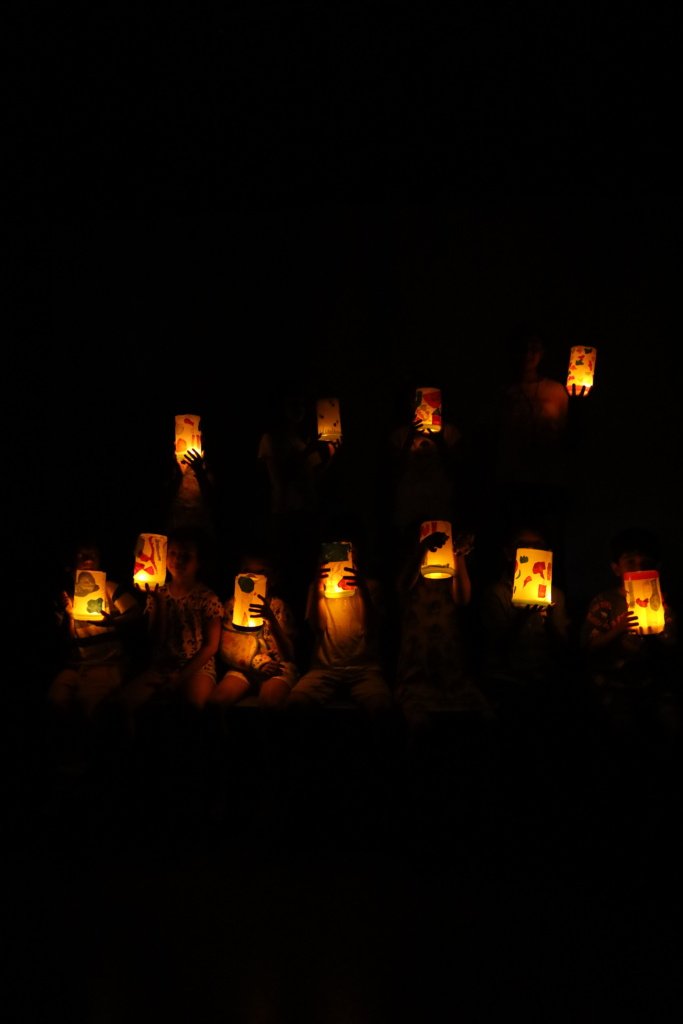
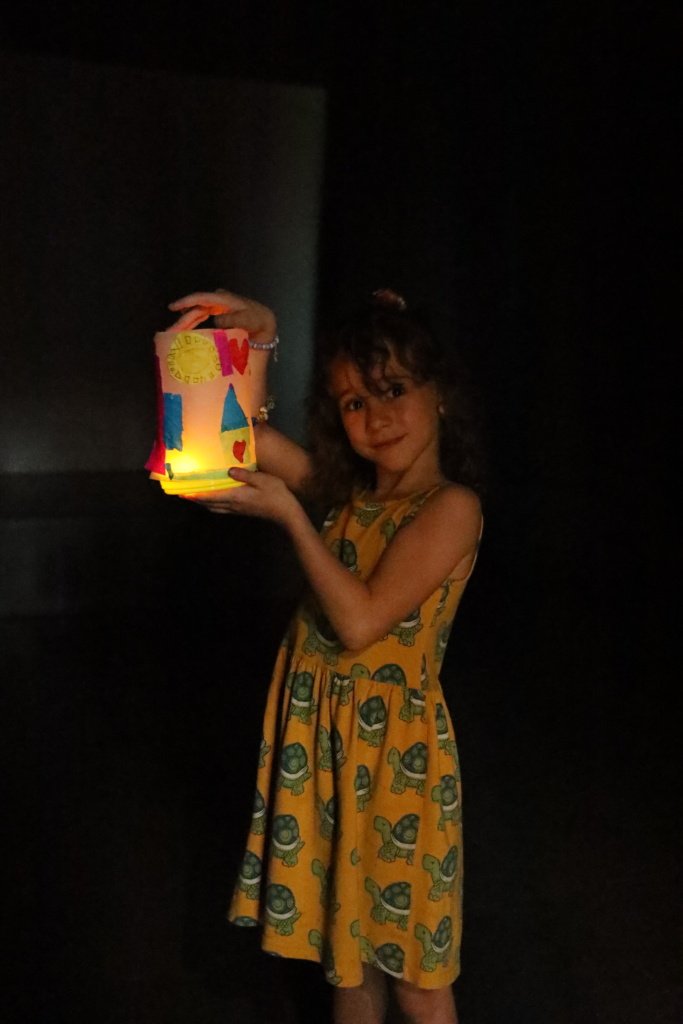
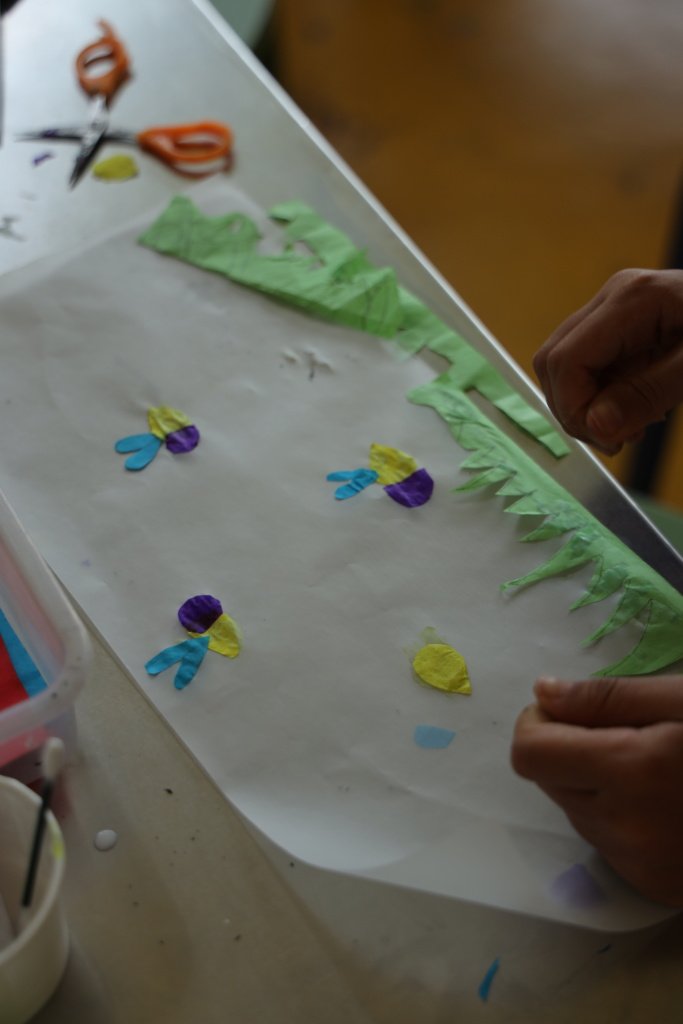

Little Lush Lands
In this session, designed and facilitated by Ketan Sheldarkar, children learned how to build their own closed terrariums. Using soil, moss, stones, and small plants, they created miniature landscapes inside clear containers. As they arranged each layer, they discovered how a terrarium mimics natural systems: the moisture from the soil and plants condenses on the inner walls and eventually returns to the soil, creating a cycle. This balance of light, air, and water allows the plants to survive with very little maintenance.
While making their terrariums, children asked questions about long-term care, growth, and plant needs. Through this process, they developed an understanding of ecosystems, self-sustaining environments, and how small actions—like placing a terrarium in the right light—can support life. Their curiosity extended beyond making, encouraging ongoing observation and care.
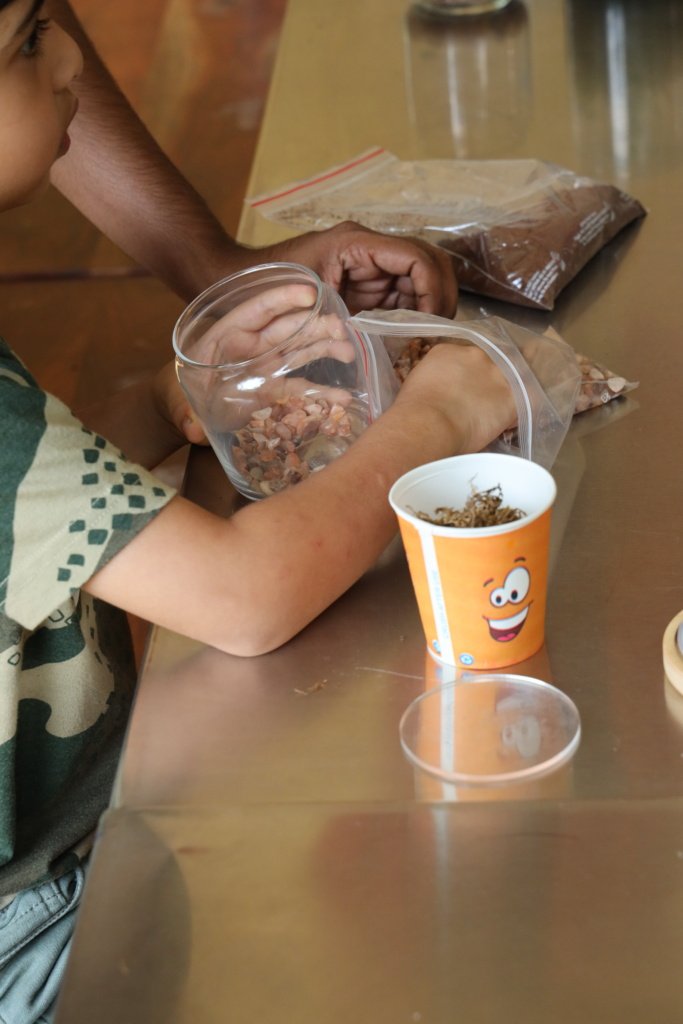
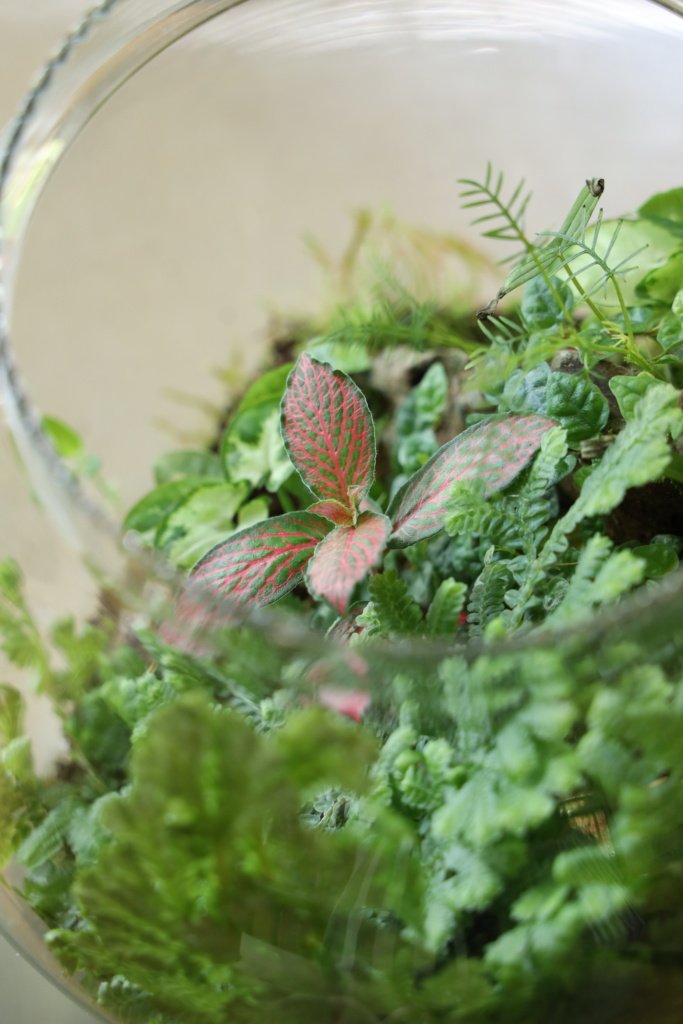
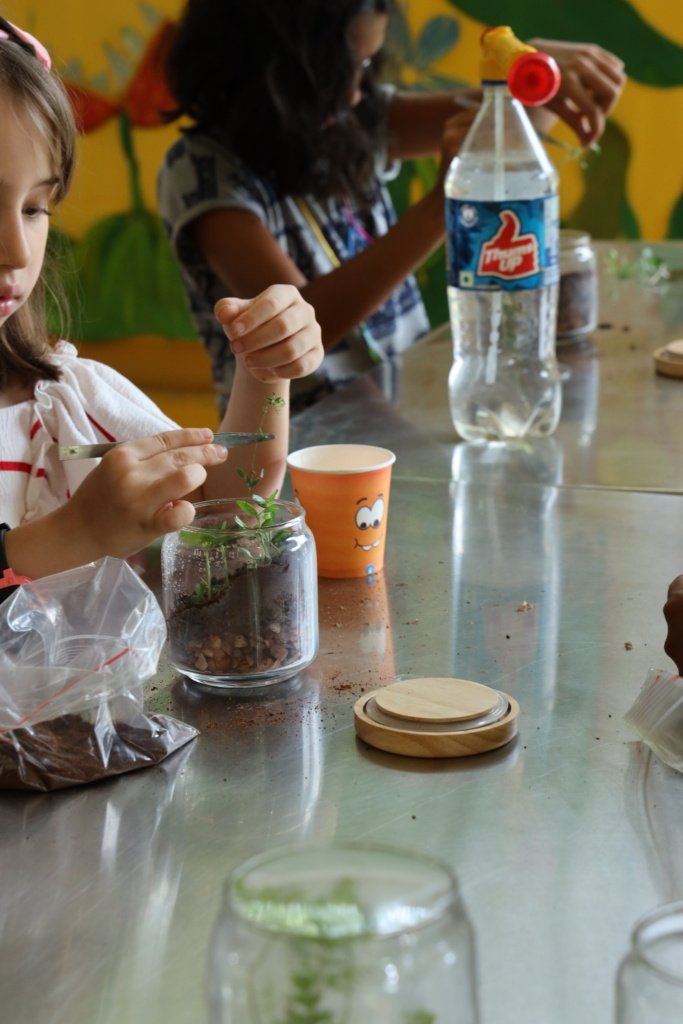
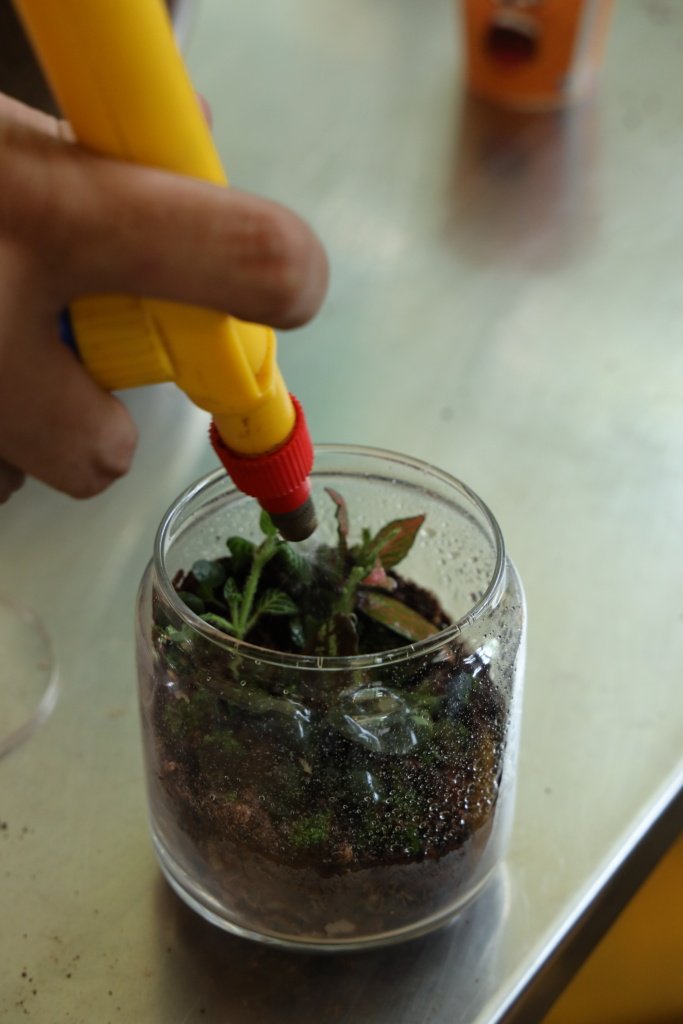
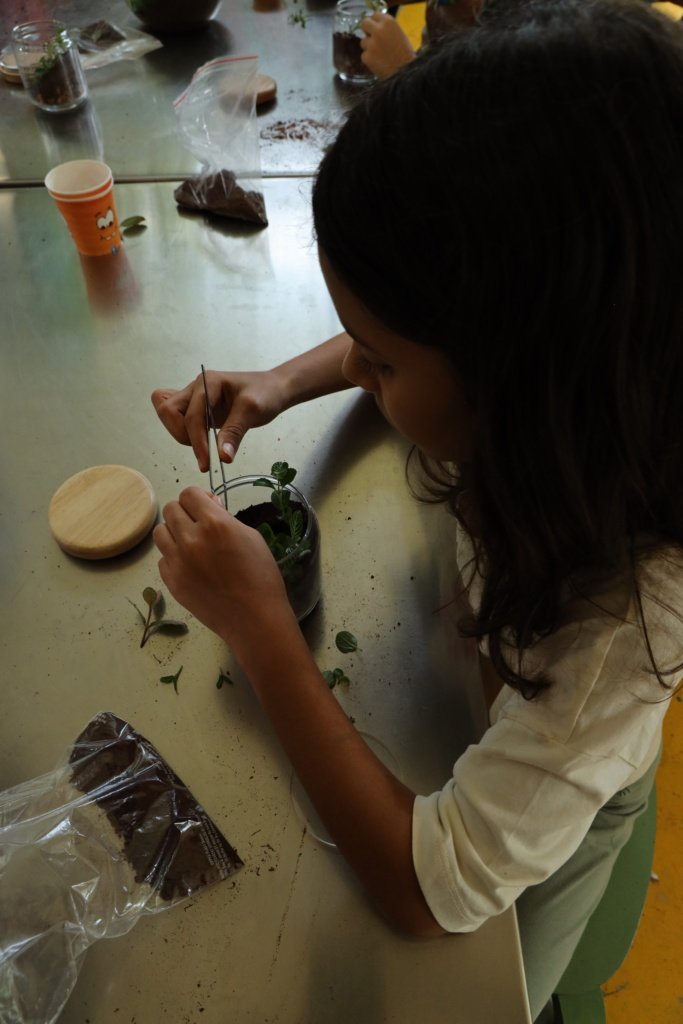
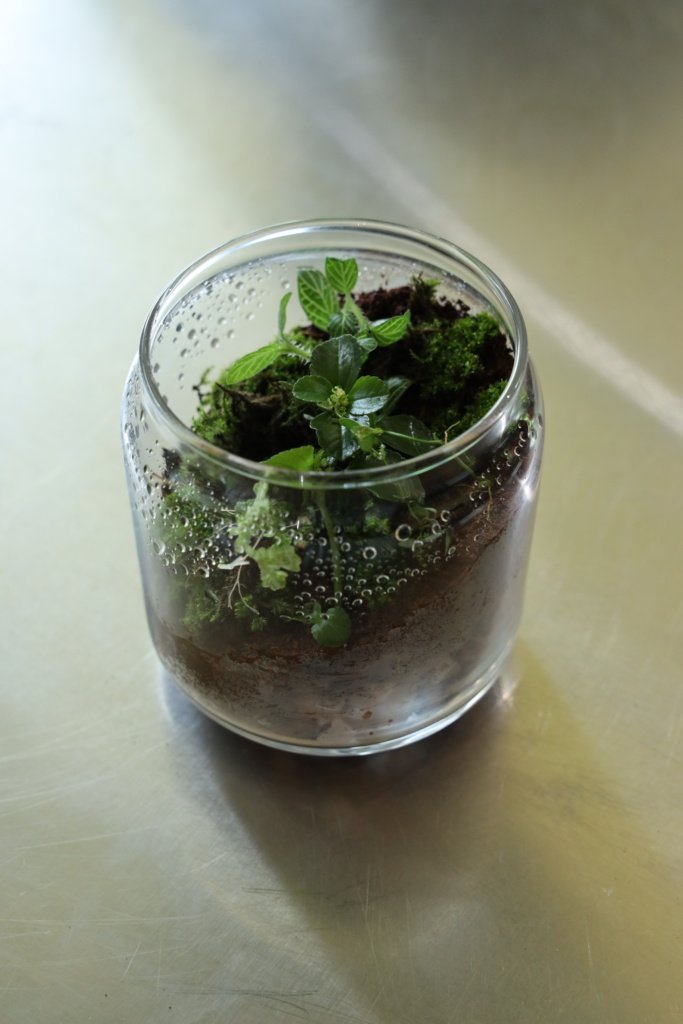
Magic Forest
A forest in a box was the concept behind Magic Forest, where children turned ordinary shoeboxes into imaginative miniature ecosystems. Through painting, cutting, and layering, they created complex landscapes filled with trees, rivers, mountains, and wildlife. The activity introduced children to the idea of an ecosystem, a community of living things interacting with their environment. Each child made choices about terrain, species, and habitat, reflecting how different elements in nature are connected. Some created rainforests teeming with flowers and vines, while others built dry, stony lands or peaceful valleys with winding rivers.
Alongside ecological thinking, the project encouraged elements of magic realism, where real and imaginary blend. A monkey might fly, or a river might glow. This blending helped children understand that storytelling and science can coexist, and that creative expression is also a way to explore how the world works.
My forest is full of purple and black trees. All the trees have eyes. The forest is guarded by a big, big bird.
– A 5-year-old participant

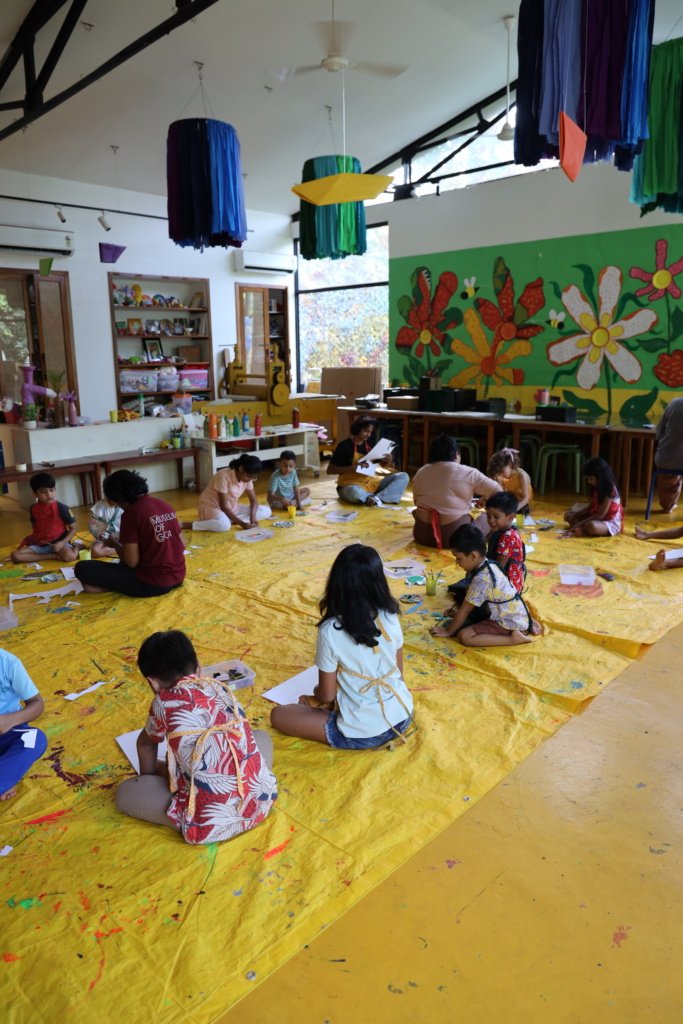
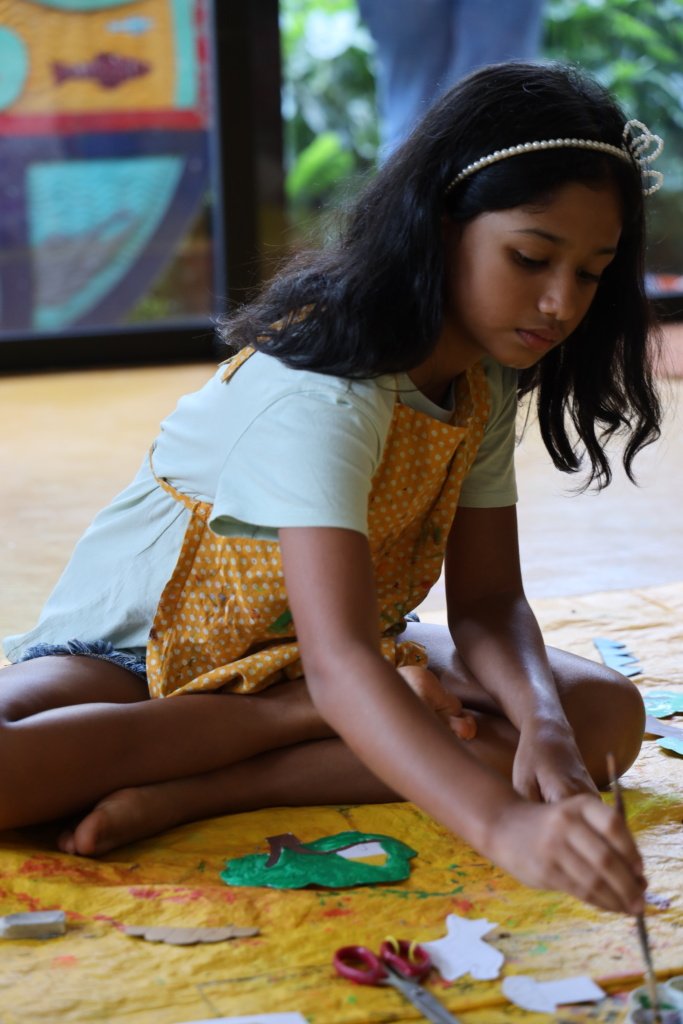
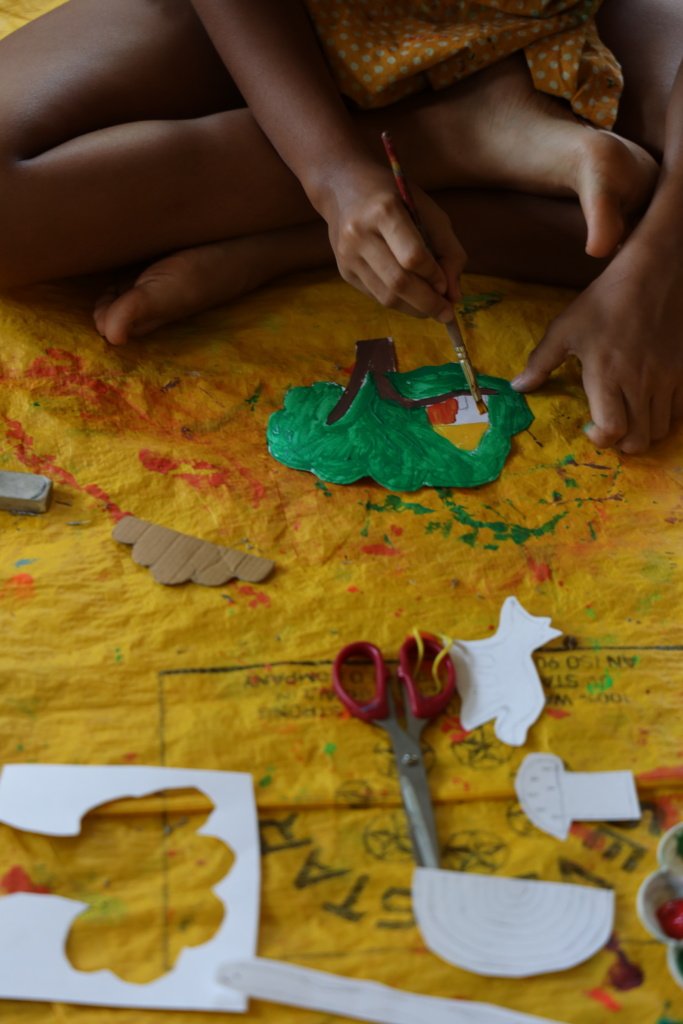
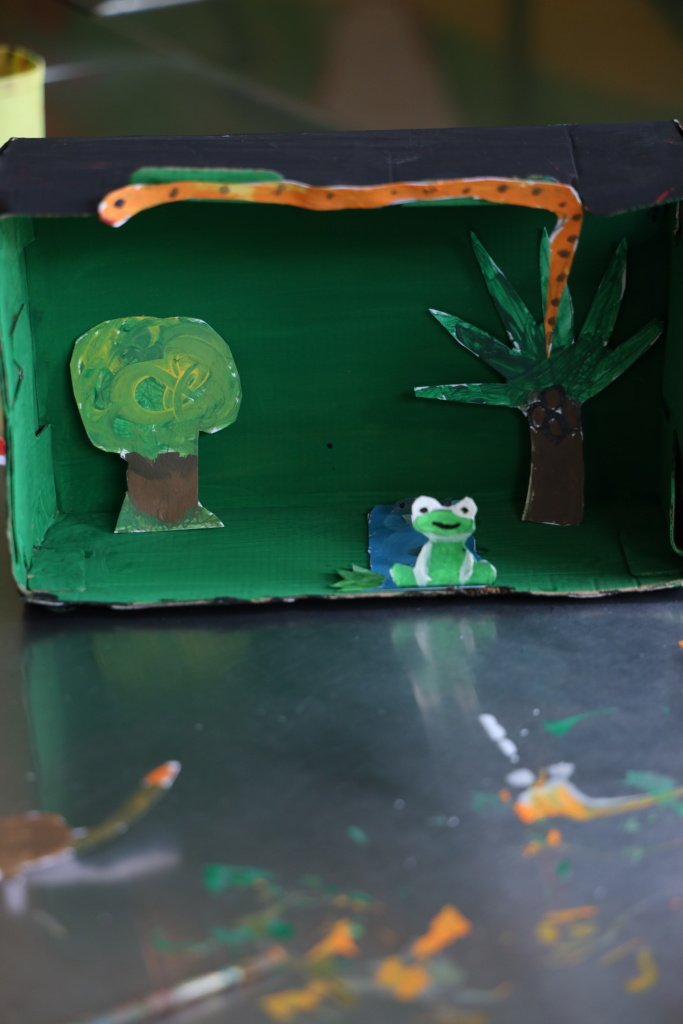
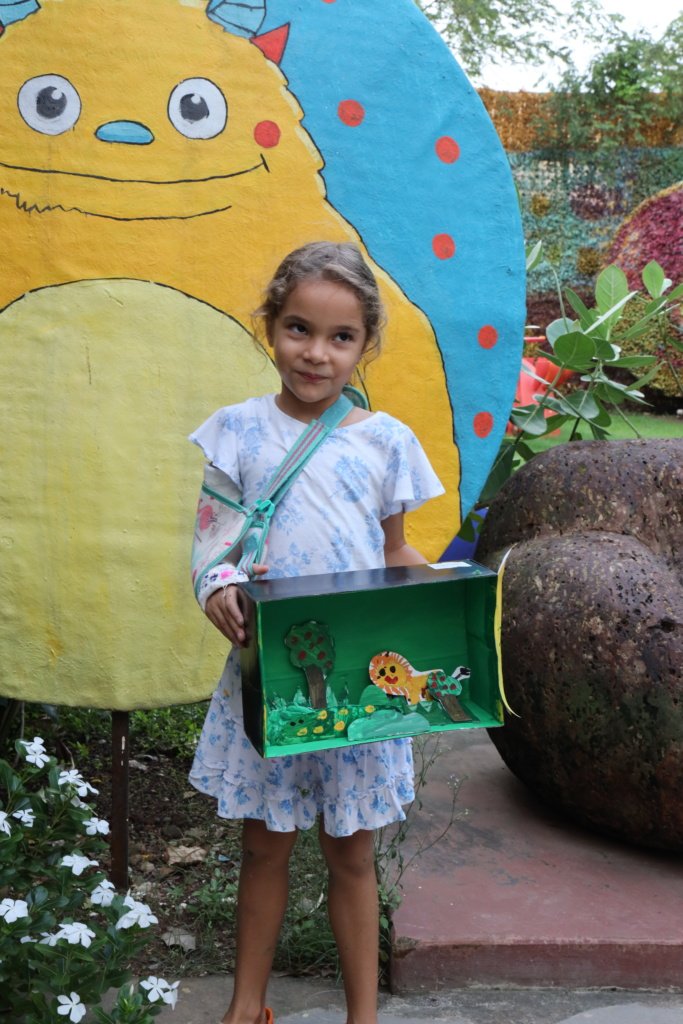
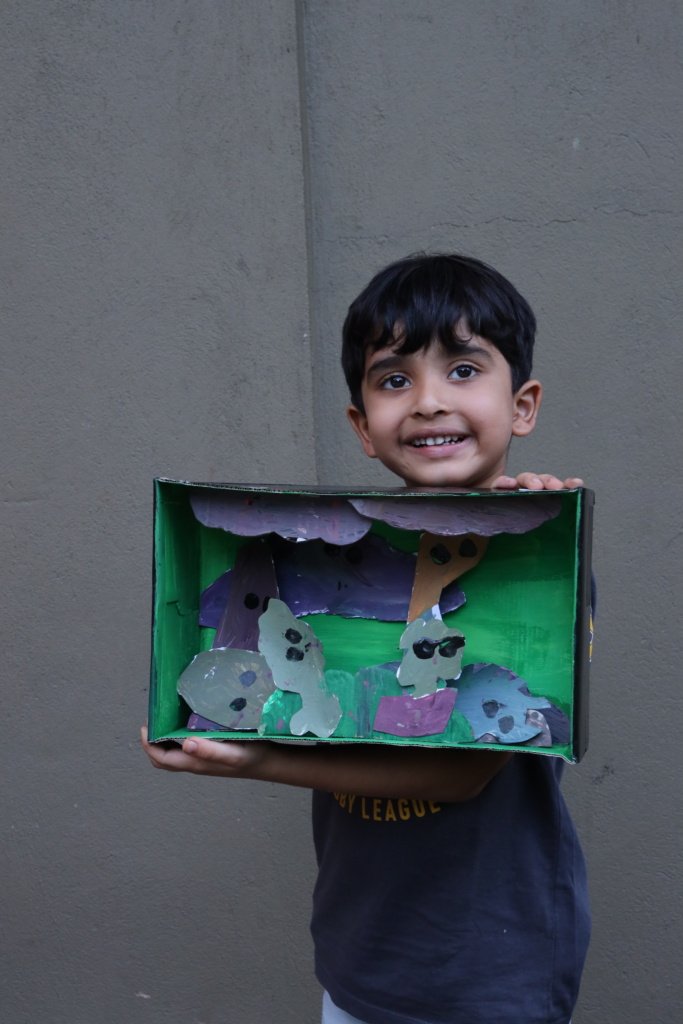
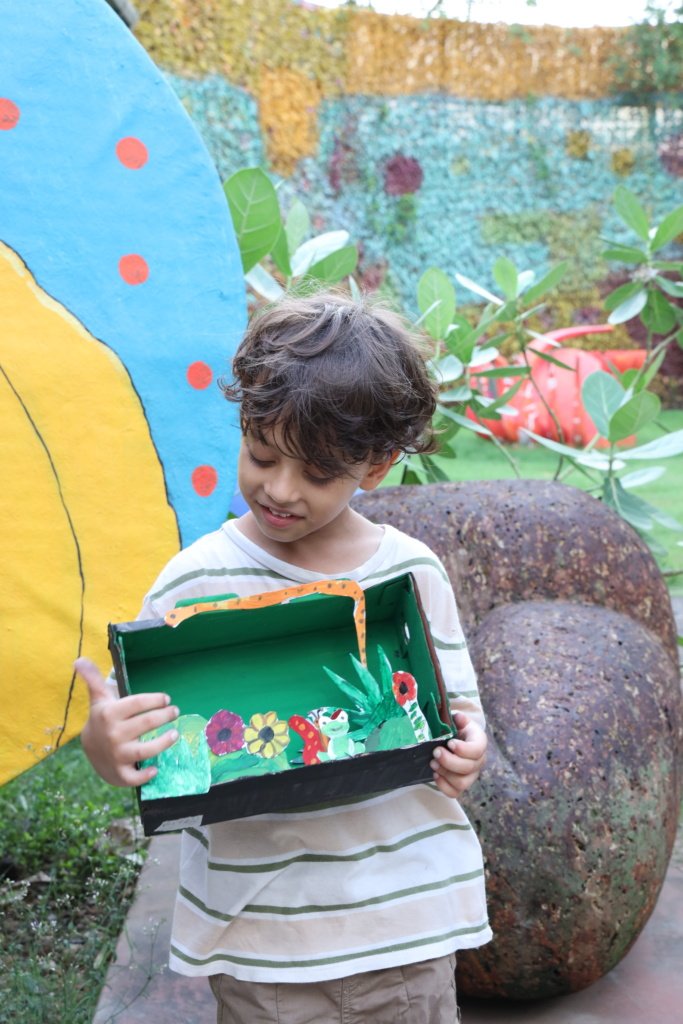
The Takeaway
Bloop! Monsoon Camp wasn’t just a week of activities; it was a space where children were invited to reflect on the world around them. Through paint, stories, and play, they connected with puddles, plants, wind, and creatures in ways that sparked both joy and curiosity.
One child painted clouds on her umbrella so the raindrops would fall from the sky she made. Another gently held a centipede for the first time, not out of fear, but wonder. A five-year-old imagined a forest filled with trees that had eyes, guarded by a bird as big as their imagination. Each child left with something more than a finished piece; they left with a story they had shaped, a world they had built, and a sense that nature is not something far away, but something they are part of. And somewhere, on a rainy afternoon, a small lamp glows with fireflies, a terrarium sits quietly growing, and a painted umbrella spins in the drizzle, each one a tiny reminder of a week well spent.
